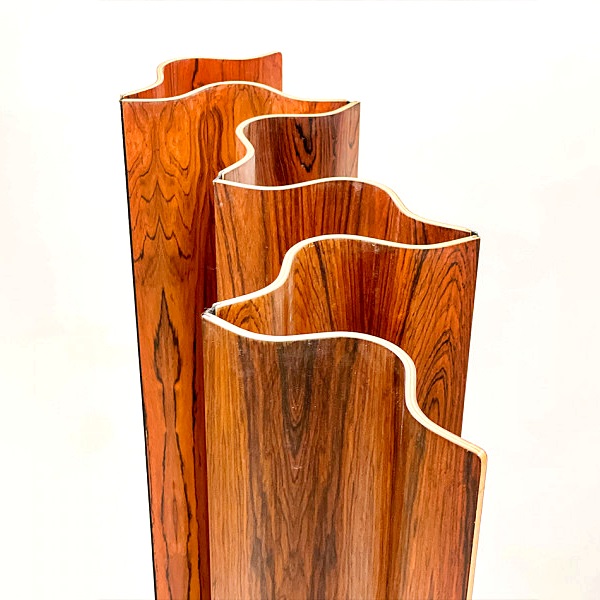Table Of Content
In doing so, the students can reinforce learned words and make connections throughout the reading. It was frustrating that most of the work’s contemporary examples were hyperlinked instead of embedded as images and potentially impermanent. Though likely a result of copyright issues, to present most contemporary accounts as a block of black text visually diminishes their importance. (It’s also likely that students won’t bother clicking the links.) Would like to see links changed to more persistent format. It would be very easy to assign portions of this textbook throughout a teaching term, as most chapters can function as independent units, while also effectively engaging with other sections. I like the overarching themes of each chapter, which could easily be realigned as needed, and the fact that the subunits are of a manageable length.
Social Links
Each chapter ends with key concepts, vocabulary and good test questions as a review of the material. Although the text provides a detailed analysis of ancient, traditional, and modern visual art, it is notably deficient in its treatment of contemporary (post 1960s) art. This omission would lessen the appeal to college students of this otherwise encyclopedic and well reasoned introduction to the critical awareness of visual art. For the most part, the text is very relevant, especially its chapters on themes in art.
Education

The definitions of terminologies accurate and simplified for readers to grasp the concepts quickly. However, it may require updating in the next three years to expands coverage particularly the diversity of the subject matter covered, illustrations, and invariably to bring new content into the chapters. The terminology used is consistent and works to expand on the content for proceeding chapters. Very clear, easy to understand, many good images and illustrations.
All Students by Gender23
Some professionals need certification or licensure to pursue their art and design careers. These requirements prove to employers and customers alike that workers meet certain professional standards set by the industry. Game designers work as part of a team to create video games and other playable content.
Get assisted by higher education experts
In a section titled and devoted to "Appropriation" (Chapter 11), the only perspective offered is that appropriation is a "legitimate way" for artists to "re-contextualize" images. To devote a section to appropriation, and yet leave out cultural conflicts entirely, misses an incredibly problematic aspect of appropriation in both the historical and contemporary landscapes of art and design. This is a critical discussion that belongs in the classroom, and a disappointing absence in this text.
Kendall College of Art and Design hosting 2024 annual Student Exhibition - FOX 17 West Michigan News
Kendall College of Art and Design hosting 2024 annual Student Exhibition.
Posted: Wed, 24 Apr 2024 16:07:29 GMT [source]
Best Art and Design colleges in Los Angeles
Each chapter is well organized and easy to follow with a consistent arrangement that will be especially helpful for students as they study key points presented in the text. Chapters build in a logical progression a the beginning of the text. Each chapter opens with Learning Outcomes and ends Key Concepts, Test Yourself, and Key Terms sections to check for understanding. Then they need to have an immediate opportunity to apply those ideas.
Certificates Programs
In 2022, 209 Art and Design students graduated with students earning 140 Bachelor's degrees, and 69 Master's degrees. California State University-Fullerton offers 11 Art and Design degree programs. It's a very large, public, four-year university in a large suburb. In 2022, 551 Art and Design students graduated with students earning 500 Bachelor's degrees, 48 Master's degrees, and 3 Certificates. It's a large, private not-for-profit, four-year university in a midsize city. In 2022, 549 Art and Design students graduated with students earning 431 Bachelor's degrees, and 118 Master's degrees.
An exception to this is the chapter on Art and Ethics, which addresses recent controversies in the field. The choice of chapter topics and their flow is appropriate and student-centered. The book starts with basic information (what art is, its structure, media used) and works toward greater complexity (various ways art connects to and shapes our lives). This Open Textbook is a valuable addition to the canon of texts currently recommended as an introduction to art. The thematic chapters provide a perfect platform to commence a discussion on a topic (for example, meaning in art).
Advance your career with an online degree
However, some of them could be improved for clarity (Figure 10.48 and 10.49). The 'Personal and Communal Need to Create' sections are so important. The text does not have many examples of non-western artist and is not overly inclusive of a variety of races, ethnicities, backgrounds, gender.
I found each chapter to be clearly and effectively structured, with appropriate subheadings and use of bold text to highlight important ideas and terms. I also found that the overall content maintained a consistency in tone, in spite of the fact that multiple contributors were working on any given chapter. The text is very clear and approachable, yet engages with complex theories and concepts. I appreciate the clarity of the material and the structure of chapters as well as the tone of the book. Color images with good labels and attribution make it easy to discuss and research further for students. The text is divided into chapters that can be digested in one reading assignment or broken into shorter assignments.
The colors between primary and secondary colors are referred to as “intermediary” colors, namely, yellow-green, yellow-orange, red-orange, red-purple/violet, blue-green, and blue-purple/violet. It is important to note here that these intermediary colors are also sometimes called tertiary colors. There are three primary aspects or elements related to color, namely, hue, value, and intensity (this is also sometimes referred to as saturation or chroma).

No comments:
Post a Comment